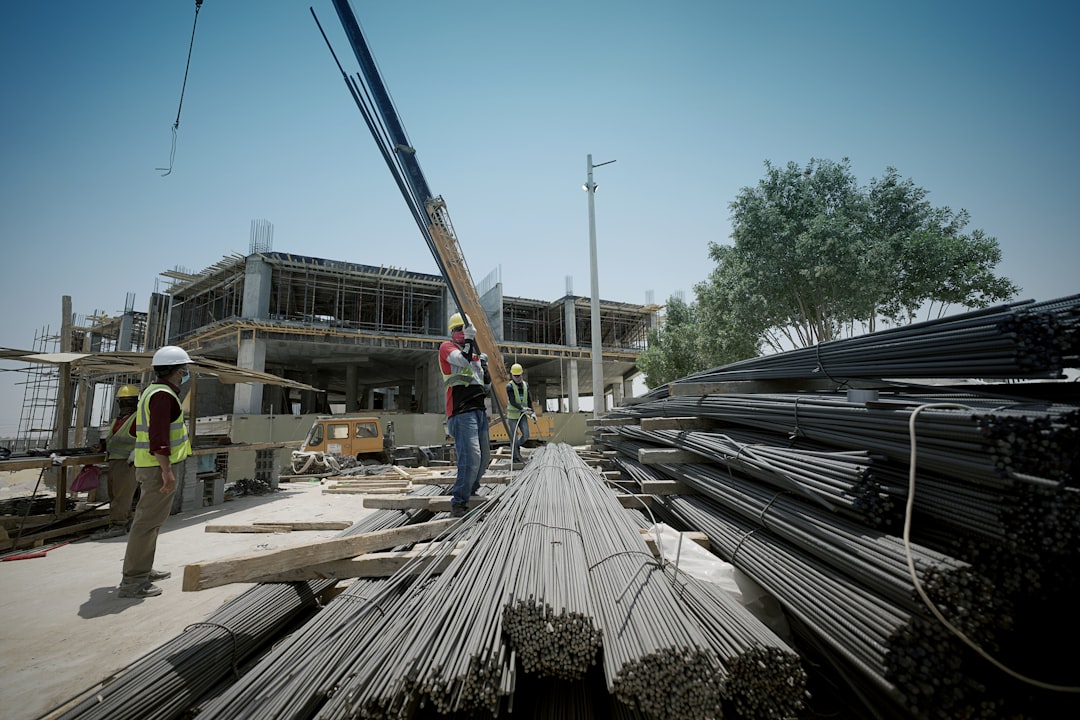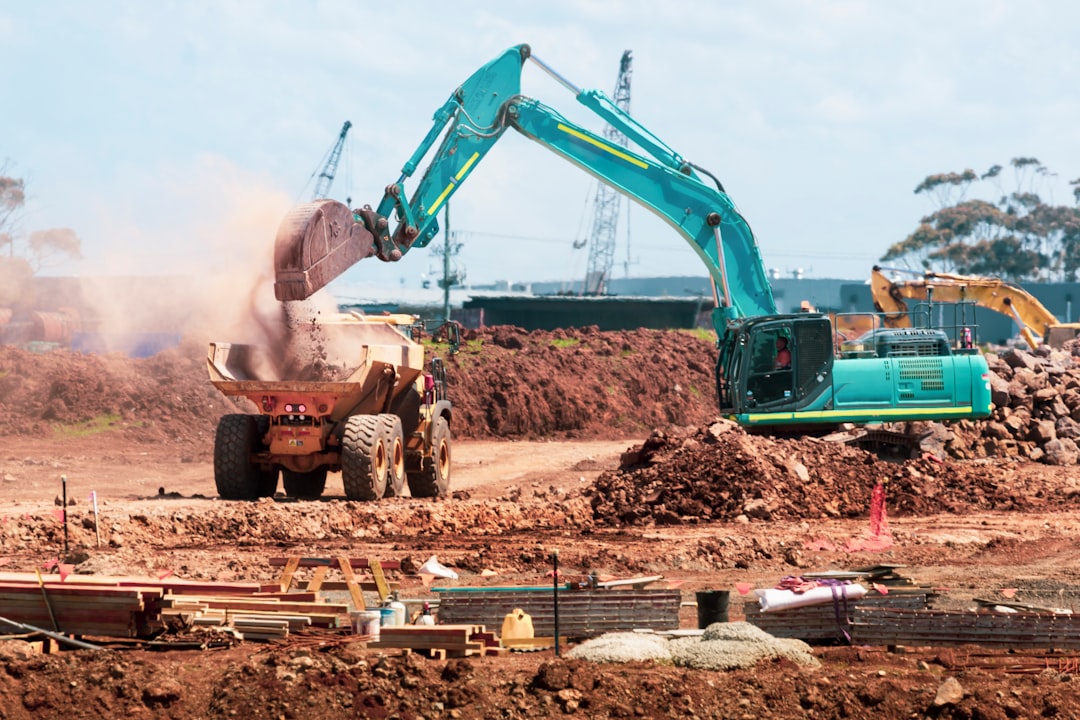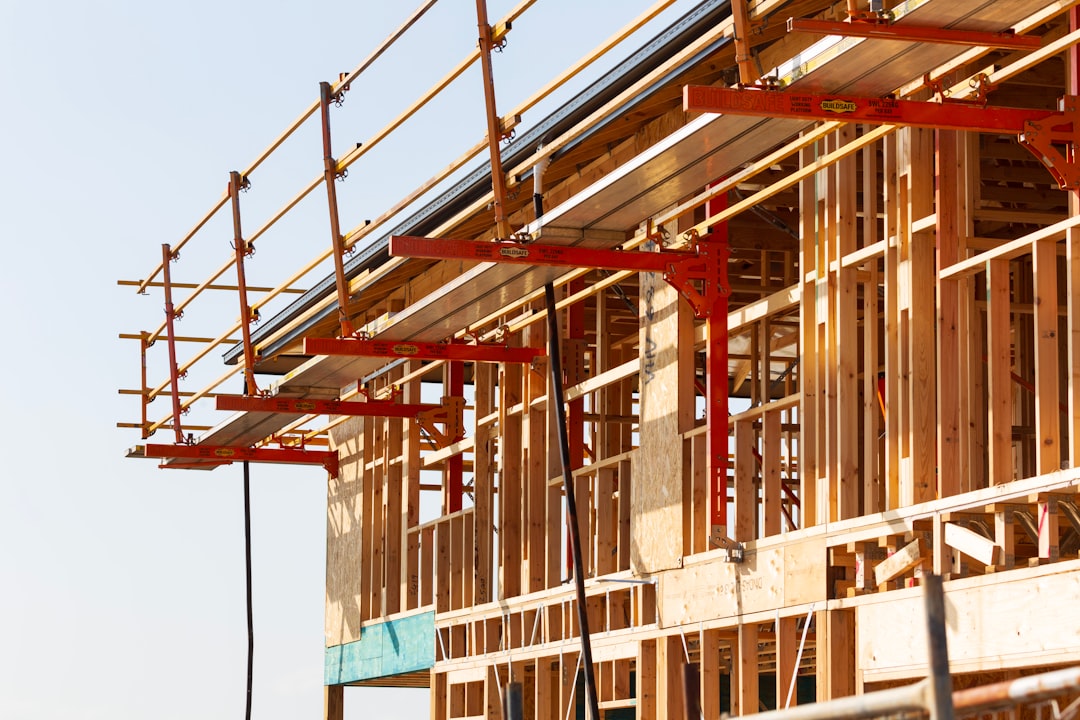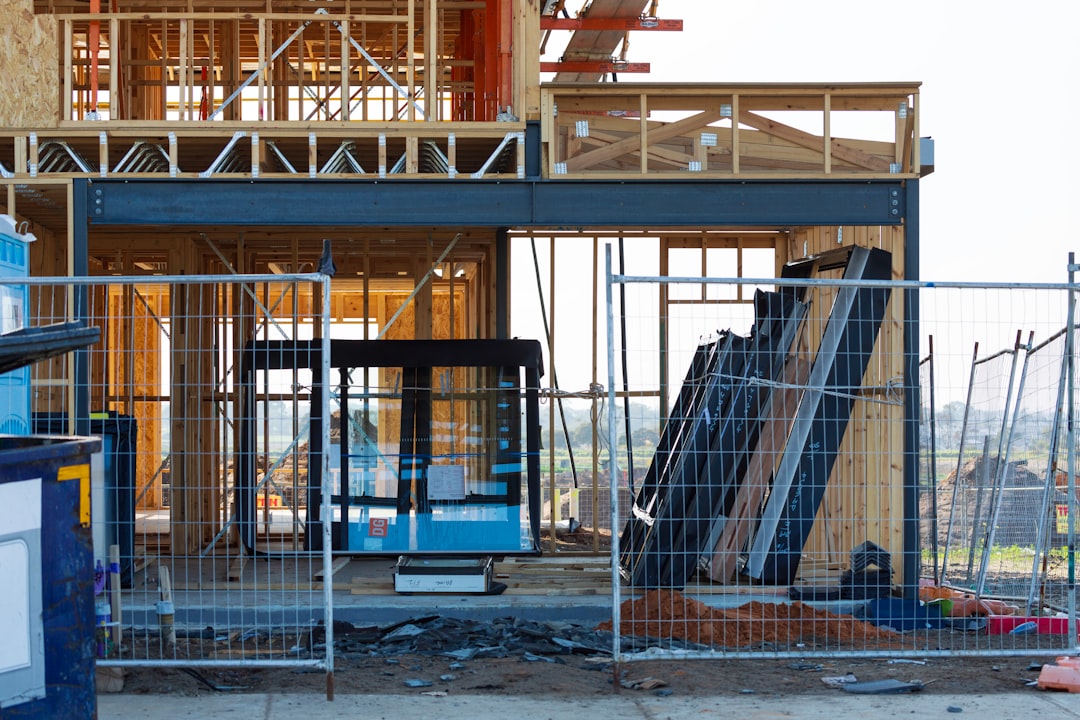
Supercharge your lead generation with a FREE Google Ads audit - no strings attached! See how you can generate more and higher quality leads
Get My Free Google Ads AuditFree consultation

No commitment
Supercharge your lead generation with a FREE LinkedIn Ads audit - no strings attached! See how you can generate more and higher quality leads
Get My Free Google Ads AuditFree consultation

No commitment
Supercharge your lead generation with a FREE Meta Ads audit - no strings attached! See how you can generate more and higher quality leads
Get My Free Google Ads AuditGet My Free LinkedIn Ads AuditGet My Free Meta Ads AuditFree consultation

No commitment
Supercharge your lead generation with a FREE Google Ads audit - no strings attached! See how you can generate more and higher quality leads
Get My Free Google Ads AuditFree consultation

No commitment
In today's advanced marketing landscape, industry leaders must integrate online and offline strategies to effectively capture and engage their target audience. With channels like social media enhancing brand perception and email marketing fostering client relationships, Google Ads holds a vital middle-funnel role by targeting potential clients precisely when they are seeking solutions. This is especially crucial for businesses within the soil solidification sector, where missing high‑value prospects because they aren’t tracked can lead to lost opportunities and set a company back against the competition. By leveraging Google Ads, soil solidification businesses can connect their digital efforts with tangible in-field results, ensuring your ad spend targets decision-makers with real intent during peak interest and need.

Market demand for soil solidification solutions continues to rise as construction, remediation, and infrastructure projects seek efficient, sustainable ground improvement. Marketers in this space must leverage every available digital channel to surface in front of qualified decision-makers at the exact moment of need, and can further expand their strategy by exploring the impacts of microplastic pollution on freshwater ecosystems to inform sustainability-focused messaging.
A precision-focused Google Ads strategy allows businesses to capture high-intent traffic from engineers, general contractors, and environmental consultants researching soil stabilization techniques. With advanced account identification, marketing teams now go beyond clicks and form submissions to identify in-market companies and decision-makers who typically remain anonymous, while dynamic audience segmentation ensures outreach is always timely and relevant.
This comprehensive framework directly addresses the challenges faced by soil treatment and environmental service providers: identifying and engaging the right leads at scale, while driving measurable revenue impact through unified data and smart automation. For B2B marketers, it enables agile, cost-effective lead generation in a competitive landscape where every inquiry counts. To streamline your approach, get started for free with Sona and unlock advanced marketing capabilities tailored to your industry.

Precision marketing is critical in the soil solidification industry, where project cycles are long, budgets are high, and technical expertise drives buyer decisions. Digital channels, particularly Google Ads, enable companies to reach decision-makers at the exact moment they signal intent to purchase or explore advanced soil stabilization techniques. For further insights on digital strategies, explore our collection of marketing articles.
Google Ads provides specific audience targeting, allowing marketers to focus on procurement officers and project managers actively searching for reliable soil treatment solutions. This level of granularity ensures that ad spend is allocated toward the most relevant professionals, maximizing every impression and click with actionable engagement data.
High-value service promotion is streamlined as campaigns can be built around substantial construction projects requiring specialized soil solidification methods. By identifying in-market buyers and syncing enriched company profiles into ad platforms and CRMs, marketing teams can prioritize outreach to accounts with immediate needs, improving both speed and quality of business development.
Real-time demand fulfillment is essential when lead information is captured the moment prospects engage with ads, reducing the risk of losing opportunities to faster-moving competitors. Marketers benefit from real-time visitor identification, ensuring that even previously anonymous traffic is matched to high-fit organizations, instantly triggering personalized follow-up or nurturing workflows.
Emerging market visibility is achieved as Google Ads extends reach into urban growth zones and geographies not easily targeted with traditional methods. Dynamic audience integration allows marketers to continually update prospect lists based on in-market behavior, keeping messaging relevant for evolving project requirements. Recent research on microplastics contamination in soil highlights the importance of targeting environmentally conscious buyers in this sector.
Comprehensive data integration ties every ad engagement to project milestones, enabling closed-loop measurement from initial click to contract signature. With advanced attribution and CRM syncing, teams can track ROI across both online and offline touchpoints, resulting in more accurate reporting and optimized spending for soil treatment marketing strategies.

Soil solidification providers face a complex buying cycle, with decision-makers seeking clear proof of technical capability and compliance. Google Ads offers a direct, data-driven path to reach these high-value audiences at moments of intent, enabling revenue teams to capture and nurture leads efficiently. For teams seeking to maximize pipeline from anonymous site visits, Sona Identification reveals which companies are engaging, linking them to revenue opportunities.
Marketers in the soil stabilization and construction sectors benefit from campaign types tailored to each stage of the buyer journey. By aligning campaign formats to intent and engagement signals, teams maximize ROI and reduce wasted spend, especially when unified audience and attribution data inform every step. For a deeper dive into digital strategy, explore our blog collection.

The soil solidification sector continues to evolve as environmental standards rise and infrastructure needs expand. Forward-thinking B2B teams can drive measurable impact by aligning campaign messaging with technical expertise, ensuring every touchpoint reinforces trust and clarity for decision-makers. For actionable strategies, explore our collection of articles on B2B marketing.
Ready to accelerate your growth in the sector? Get started for free with Sona.
Effective audience segmentation elevates soil solidification campaign performance by ensuring messaging aligns with the unique priorities of each submarket. Marketers achieve higher engagement and lower acquisition costs by tailoring value propositions and creative to the specific needs of construction planners, environmental consultants, and engineering firms. For more strategies to enhance segmentation, explore our collection of marketing insights.

| Industry | Keyword | Monthly Search Volume | Competition Level | Low Bid | High Bid |
| Soil Solidification | soil solidification | 50 | MEDIUM | 0.66 | 5.36 |
Reaching organizations involved in soil solidification requires a targeted approach that aligns with their technical decision-making cycles and project timelines. A precise keyword strategy ensures your message appears at pivotal research and vendor selection moments, placing your business in front of high-value prospects actively searching for solutions.
Mining keyword trends for “soil stabilization methods,” “soil solidification contractors,” “environmental remediation solutions,” and “ground improvement technologies” lets you align bidding and content to the evolving language of your market. By closely monitoring these terms, marketers can quickly iterate on messaging, landing page copy, and audience definitions to maximize both reach and conversion quality. Ready to put these strategies into action? Get started for free with Sona.

Modern B2B teams in the soil solidification sector face intense competition and rising lead acquisition costs. Precision in targeting, messaging, and measurement is essential for driving high-value conversions while minimizing wasted spend. For a broader look at marketing strategies, visit the Sona blog.
Approaching campaign execution with a unified, data-driven methodology ensures every marketing dollar advances pipeline goals. The following framework details actionable steps to structure, launch, and iterate on campaigns for soil solidification, enabling revenue teams to capture intent-rich demand and deliver measurable outcomes.
Effective soil solidification campaigns begin with robust, tailored keyword research. Focus on terms that reflect project-specific services, such as “soil stabilization techniques,” “contaminated soil remediation,” and “soil treatment for construction.” Include region-specific keywords to reach decision-makers in target geographies, such as “soil stabilization contractors Houston” or “soil solidification services Ontario.”
Use real-time intent signals to refine keyword selection. By analyzing in-market behaviors—like frequent searches on soil remediation or active research on construction methods—teams can prioritize keywords driving the highest likelihood of engagement. Integrating CRM systems with ad platforms enables marketers to dynamically update keyword lists as new market signals and account-level data emerge, ensuring campaigns always align with the most valuable opportunities.
Craft ad copy that establishes authority, responsiveness, and technical expertise in soil solidification methods. Highlight unique value propositions, such as advanced stabilization materials, environmental compliance, or rapid project turnaround. Use language that speaks directly to the challenges faced by environmental engineers, project managers, and procurement teams.
Leverage enriched audience data to personalize messaging for top-tier accounts. When CRM and ad platforms sync, ad copy can dynamically reference project scale, regulatory needs, or previous engagement history. This approach increases relevance and click-through rates, positioning your solution as the obvious choice for complex soil treatment and construction projects. For an overview of the environmental impacts that can inform your messaging, review this study on microplastic pollution in soil.
Bridge the gap between ad promise and user experience with landing pages optimized for conversion. Ensure messaging aligns with ad copy and clearly communicates service benefits, case studies, and next steps. Incorporate strong calls to action directed at qualified leads seeking soil stabilization or remediation services.
Use visitor identification tools to recognize returning accounts and adapt page content accordingly. For example, landing pages can surface project-specific resources or highlight relevant certifications for prospects already engaged in the sales funnel. Integrated analytics and reporting reveal which segments convert best, guiding future landing page iterations.
Establish a continuous feedback loop by monitoring performance metrics, such as lead quality, conversion rates, and pipeline advancement. Attribute both online and offline conversions to accurately measure ROI from campaigns for soil solidification. Sync campaign data with CRM and automation platforms to maintain a unified view of account engagement.
Dynamic audience updates ensure that as leads progress through the sales funnel, retargeting efforts stay focused on high-intent prospects. Real-time intent signals and enriched contact data power optimizations—budgets shift toward channels and audiences generating the strongest revenue impact. This closed-loop approach turns every campaign interaction into actionable sales intelligence, maximizing efficiency and growth for B2B teams in the soil solidification industry.
For additional strategies on maximizing campaign performance, explore intent-driven retargeting tailored to environmental remediation and construction audiences. Ready to optimize your campaigns? Get started for free with Sona.
Soil solidification businesses can accelerate growth by strategically aligning digital marketing with broader organizational objectives. Strengthening your digital footprint requires pinpointing inconsistencies in messaging and leveraging data-driven approaches that unify both sales and marketing efforts.
Advanced ad strategies empower soil solidification marketers to capture new leads and reinforce their digital presence with exceptional accuracy. Effective execution relies on rigorous segmentation, compelling creative assets, and precise measurement of both online and offline conversions. By integrating CRM and ad data, businesses achieve actionable insights that drive continuous optimization, ultimately ensuring advertising efforts directly support revenue targets across marketing and sales channels. To see how you can streamline these efforts, get started for free with Sona.
As you navigate the competitive landscape of promoting soil solidification solutions, leveraging the power of Google Ads can be a game-changer. Effectively targeting the construction and environmental sectors requires not only a strategic approach but also the right tools to drive meaningful engagement with potential customers.
Throughout this article, we've explored the core challenges you face in reaching the right audience and maximizing your marketing spend. We've discussed strategies to optimize your Google Ads campaigns, from keyword selection to targeting options, ensuring your efforts translate into tangible results. By harnessing the potential of data-driven insights, you can refine your approach and achieve greater impact in your promotional activities.
Imagine transforming your marketing strategy, reaching more customers, and driving growth in your business. By implementing these techniques, you can position yourself as a leader in the soil solidification industry, offering valuable solutions to those who need them most. Empower yourself to make informed decisions that propel your business forward.
To take the next step in revolutionizing your marketing efforts, start for free to experience our platform's capabilities today. Let us help you unlock the full potential of your Google Ads campaigns and drive the success your business deserves.
To target the right audience with Google Ads, use precision marketing strategies that leverage audience demographics and targeted keywords specifically aligned with soil solidification stakeholders like engineers, general contractors, and environmental consultants.
Best practices include developing a data-driven approach, employing targeted keywords, aligning landing pages and creative assets, continuously optimizing performance data, and integrating cross-channel strategies for comprehensive audience engagement.
Success can be measured through integrated attribution and conversion tracking, which reveal the impact of campaigns by tracking both online and offline leads and ensuring a holistic view of marketing effectiveness.
Effective keywords include niche search terms like 'soil stabilization methods,' 'ground improvement solutions,' 'environmental remediation soil treatment,' and region-specific terms to capture high-intent inquiries.
Optimize Google Ads by analyzing on-site visitor behavior, refining keyword targets, using dynamic audience segmentation, and syncing lead data with CRM systems to ensure timely and relevant outreach.
Join results-focused teams combining Sona Platform automation with advanced Google Ads strategies to scale lead generation

Connect your existing CRM

Free Account Enrichment

No setup fees
No commitment required

Free consultation

Get a custom Google Ads roadmap for your business
Join results-focused teams combining Sona Platform automation with advanced Meta Ads strategies to scale lead generation

Connect your existing CRM

Free Account Enrichment

No setup fees
No commitment required

Free consultation

Get a custom Google Ads roadmap for your business
Join results-focused teams combining Sona Platform automation with advanced LinkedIn Ads strategies to scale lead generation

Connect your existing CRM

Free Account Enrichment

No setup fees
No commitment required

Free consultation

Get a custom Google Ads roadmap for your business
Join results-focused teams using Sona Platform automation to activate unified sales and marketing data, maximize ROI on marketing investments, and drive measurable growth

Connect your existing CRM

Free Account Enrichment

No setup fees
No commitment required

Free consultation

Get a custom Google Ads roadmap for your business
Over 500+ auto detailing businesses trust our platform to grow their revenue
Join results-focused teams using Sona Platform automation to activate unified sales and marketing data, maximize ROI on marketing investments, and drive measurable growth

Connect your existing CRM

Free Account Enrichment

No setup fees
No commitment required

Free consultation

Get a custom Google Ads roadmap for your business
Over 500+ auto detailing businesses trust our platform to grow their revenue
Join results-focused teams using Sona Platform automation to activate unified sales and marketing data, maximize ROI on marketing investments, and drive measurable growth

Connect your existing CRM

Free Account Enrichment

No setup fees
No commitment required

Free consultation

Get a custom Google Ads roadmap for your business
Over 500+ auto detailing businesses trust our platform to grow their revenue
Our team of experts can implement your Google Ads campaigns, then show you how Sona helps you manage exceptional campaign performance and sales.
Schedule your FREE 15-minute strategy sessionOur team of experts can implement your Meta Ads campaigns, then show you how Sona helps you manage exceptional campaign performance and sales.
Schedule your FREE 15-minute strategy sessionOur team of experts can implement your LinkedIn Ads campaigns, then show you how Sona helps you manage exceptional campaign performance and sales.
Schedule your FREE 15-minute strategy sessionOur team of experts can help improve your demand generation strategy, and can show you how advanced attribution and data activation can help you realize more opportunities and improve sales performance.
Schedule your FREE 30-minute strategy sessionOur team of experts can help improve your demand generation strategy, and can show you how advanced attribution and data activation can help you realize more opportunities and improve sales performance.
Schedule your FREE 30-minute strategy sessionOur team of experts can help improve your demand generation strategy, and can show you how advanced attribution and data activation can help you realize more opportunities and improve sales performance.
Schedule your FREE 30-minute strategy sessionOur team of experts can help improve your demand generation strategy, and can show you how advanced attribution and data activation can help you realize more opportunities and improve sales performance.
Schedule your FREE 30-minute strategy session





Launch campaigns that generate qualified leads in 30 days or less.
